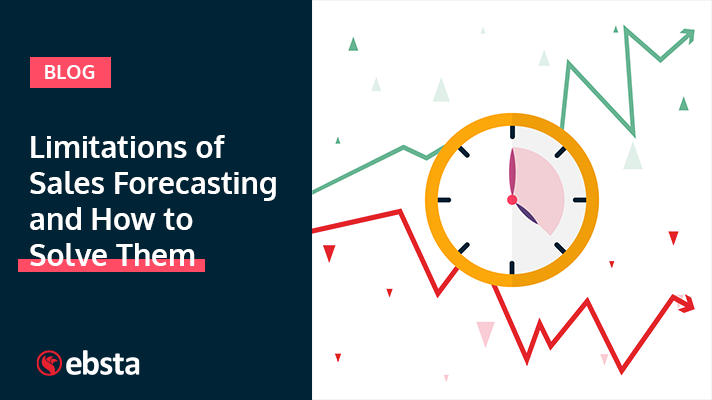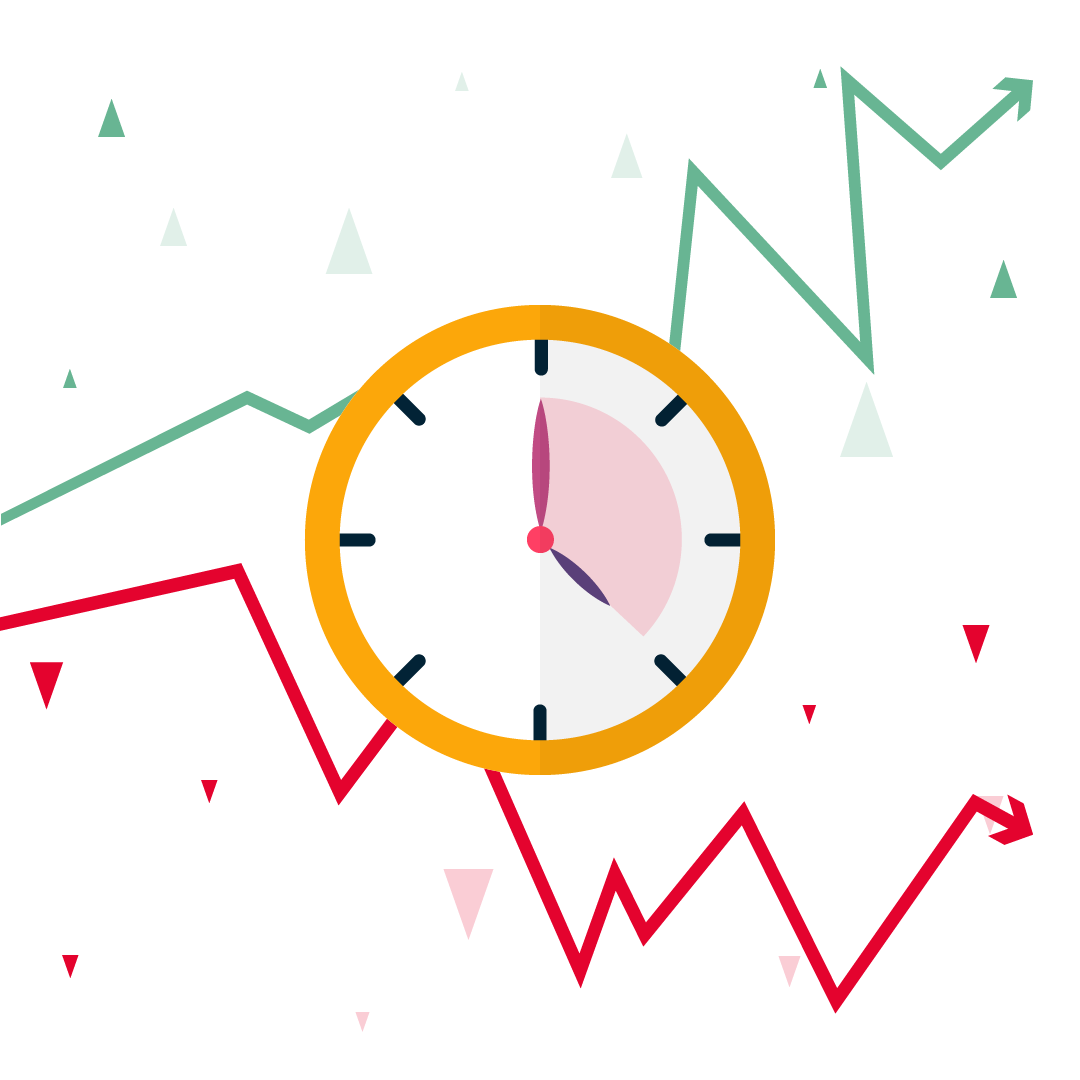Share this article
Learn from the brightest minds how to predictably and efficiently grow revenue.
Related Content
5 Ways to Use the Ebsta Integration With HubSpot to Improve Sales Performance
How to improve adoption of HubSpot with Ebsta
B2B Sales Benchmarks: 2023 H1 Update
The latest update from the 2023 B2B Sales Benchmarks analysis of over $37bn in pipeline.
How to improve AE quota attainment (according to data)
23% of reps are contributing 83% of revenue. Here's how to solve it (with data)

Limitations of Sales Forecasting and How to Solve Them
Sales forecasts are used to estimate future revenue generated by your sales teams and are heavily relied upon to make business decisions. Understanding the limitations of sales forecasting can help you to find the right forecasting strategy so your business is able to make data-driven decisions with confidence.
Why is Sales Forecasting Important?
Yes, sales forecasting is important but an accurate forecast can optimize operations across your entire business. Poor forecasting can have negative consequences on your business both in the short-term and long-term.
It is a common misconception that sales forecasts only benefit sales teams when in reality the benefits can be reaped company-wide. For example, sales forecasts influence business decisions across finance departments when budgeting and allocating resources. An inaccurate forecast might report significantly higher sales when this might not be the case. This may result in overspending of the budget which can then have a knock-on effect as the business may not be able to cover costs that quarter.
Sales forecasts are often used to spot potential risks and deal with them. A sales forecast might predict an 18% increase in opportunities, this tells management they need to hire more sales staff to cover these new opportunities. If this sales forecast is inaccurate, hiring more sales staff is a misallocation of resources and a waste of money.
Limitations of Sales Forecasting
Bias – qualitative forecasting is subjective because it relies on the judgement of experts who inevitably have personal biases. If an expert is too pessimistic or optimistic whilst developing a forecast this can skew the data which results in an inaccurate forecast. In fact, on occasion sales people have a tendency to undermine their forecasts to lower management’s expectations. This has become so common in the sales world, there is even an official term for it – sandbagging. The forecast is based on the reps narrative rather than hard data.
“Data will get you there but it’s all about human interaction and understanding how your colleagues form their forecast.” – Bradley Strite
Uncertainty – there is no guarantee of what will happen in the future. For example, a new business may expect to grow substantially in the near future but it can be difficult to predict the rate of growth to get an accurate forecast. Certain factors just cannot be predicted such as global pandemics, economic conditions and competitor behavior. Factors that are beyond your control can render your forecasts useless.
Inaccuracy – most traditional forecasts assign weights to each deal stage and these weights increase as the deal gets closer to being won or lost. However, they do not consider the amount of time the deal has been in the pipeline, how engaged the reps are with the stakeholders, the recency of the engagement, if the close date has remained the same or has changed and so on and so forth. Therefore, this type of forecast lacks accuracy as it does not consider these make or break factors.
Lack of Sales History – new businesses or start-ups may find it difficult to forecast sales as sales forecasting models often rely on historical data to predict future sales. Some techniques require a minimum of 2 years of data to provide an accurate forecast.
Resource Intensive – a working knowledge of statistics on a range of different areas is required. Some sales forecasting techniques rely on large data sets meaning it can be incredibly time-consuming to find the data needed to complete this forecast. The more data you have access to, the more accurate your forecast will be. On the other hand, the more data you have the more time it takes to prepare a forecast.
Time Intensive – First, sales people need to prepare their own forecasts by reviewing all of the accounts in their pipeline and projecting sales for each of their accounts. Secondly, a manager or a leader will need to chase these reports in order to compile all this information. Even after all this time, things change fast in the sales world and a forecast prepared in the afternoon probably won’t reflect the pipeline by the evening on the same day.

Overcoming Sales Forecasting Limitations
Overcoming Bias – create an environment of accountability. One way to create accountability is by incentivizing forecasts. For example, if your salespeople are responsible for forecasts, reward them for getting within a certain range of their forecasts. This eliminates sandbagging and gives them an incentive to be as accurate as possible.
We spoke to Bradley Strite, Revenue Operations at Kobiton, on the Sales Ops Demystified Podcast where he spoke about the challenges he faced doing remote forecasting and the pros and cons of remote forecasting. Here is what he had to say about accountability:
“Personal accountability is critical as it allows you to own your forecast.” – Bradley Strite
Clean Data – clean up your data by removing outliers that might be skewing your results. This improves the accuracy of your forecast and allows you to better understand what the data has truly revealed.
Data Entry – CRM are systems of record where you can find a list of all your accounts and contacts in one place. This can help you and your team to stay organized and keep track of all the opportunities in your pipeline. As all your opportunities are in one place, it is easier to compile your sales teams data and produce a forecast. It can also save time as CRM systems reduce the number of repetitive actions taken by sales people that are not yielding results.
Predictive Forecasting – takes traditional forecasting a step further. It considers a wide range of inputs, trends and fluctuations in data allowing you to identify new opportunities and spot risks in your pipeline in real-time. It considers your historical data with your open pipeline to provide you with an accurate forecast.
As previously mentioned, traditional forecasting uses a weighted approach that does not factor in the likelihood of a deal closing. Predictive forecasting employs the use of deal scoring which assigns a number between 1 and 100 of how likely a deal is to close by factoring in relationships, engagement, deal stage, close date, deal value and so much more to give you an accurate forecast that truly reflects the likelihood of a deal closing successfully.
This method of forecasting removes any bias and provides sales leaders with an objective forecast and view of their pipeline. Predictive forecasting automatically updates, meaning the forecast is in real-time, all the time. This allows you to keep up with the constantly changing sales world without lifting a finger.
Not familiar with predictive forecasting? Try out our 14 day free trial to take predictive forecasting for a spin!


